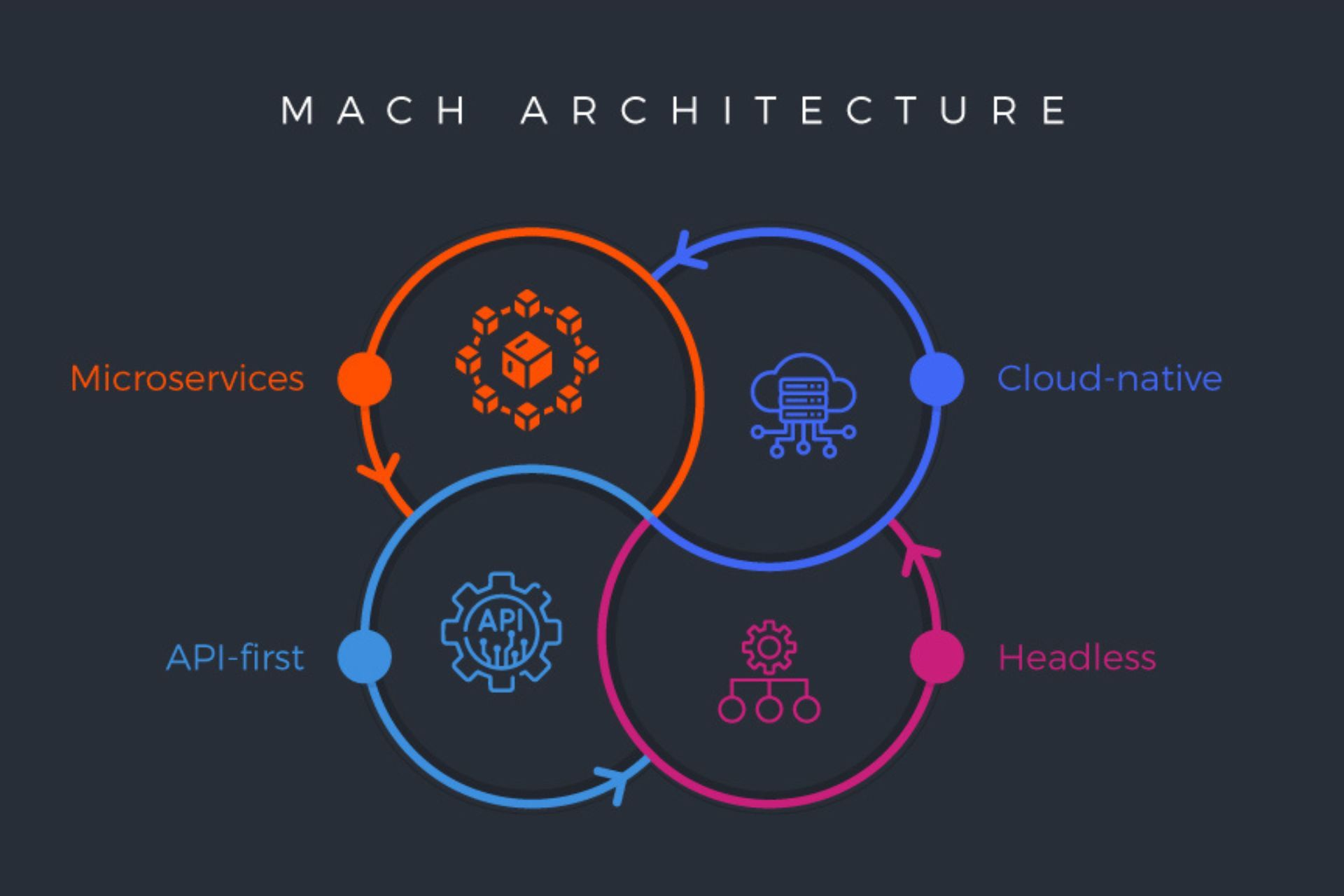The MACH architecture is modern infrastructure for building innovative ecommerce solutions
In the world of eCommerce, businesses must keep pace with the evolving needs of consumers. To meet these needs, a modern infrastructure is required that encompasses microservices, API-first, cloud-native, and headless technologies. This is where the MACH architecture comes into play. MACH stands for Microservices, API-first, Cloud-native, and Headless. It is a modern infrastructure that provides a more flexible, scalable, and agile way to build innovative eCommerce solutions.
Microservices Architecture
The M in MACH stands for Microservices. Microservices is an architectural approach that involves breaking down a large application into smaller, independent services. These services are loosely coupled and can be deployed independently. This approach provides several benefits, including increased agility, scalability, and resilience. Microservices allow businesses to rapidly develop, test, and deploy new features, and they make it easier to scale up or down as needed.
API-First Architecture
The A in MACH stands for API-First. This approach involves designing the application’s architecture around APIs. APIs provide a standardized interface for communicating between services. By designing an application with an API-first approach, businesses can develop services independently, knowing that they will be able to integrate seamlessly with other services. APIs also enable businesses to expose functionality to external developers, enabling them to build integrations and extensions easily.
Cloud-Native Architecture
The C in MACH stands for Cloud-Native. Cloud-native architecture is an approach that involves designing and building applications specifically for the cloud. It is characterized by the use of containerization, orchestration, and other cloud-native technologies. Cloud-native architectures are highly scalable and resilient, making them ideal for eCommerce applications that experience spikes in traffic. By leveraging cloud-native technologies, businesses can build applications that are more flexible and agile, allowing them to respond to changing customer needs quickly.
Headless Architecture
The H in MACH stands for Headless. Headless architecture is an approach that involves separating the frontend from the backend of an application. By decoupling the two, businesses can build more flexible and agile applications. A headless approach allows businesses to deliver content across multiple channels and devices, providing a consistent experience regardless of the platform. By using a headless approach, businesses can also benefit from the latest frontend technologies and frameworks without being constrained by the backend.
Benefits of MACH Architecture
The MACH architecture provides several benefits to businesses looking to build innovative eCommerce solutions. These benefits include:
- Flexibility: MACH architecture provides a flexible way to build applications that can easily adapt to changing customer needs.
- Scalability: Microservices and cloud-native architectures enable businesses to scale up or down quickly in response to changes in demand.
- Agility: API-first and microservices architectures enable businesses to develop, test, and deploy new features more rapidly, allowing them to respond quickly to customer needs.
- Innovation: By using the latest frontend and backend technologies, businesses can build innovative applications that provide a better customer experience.
- Reduced Costs: By using cloud-native technologies, businesses can reduce infrastructure costs, while microservices and API-first architectures reduce development and maintenance costs.
Conclusion
In conclusion, the MACH architecture provides a modern infrastructure for building innovative eCommerce solutions. By leveraging microservices, API-first, cloud-native, and headless technologies, businesses can build applications that are more flexible, scalable, and agile. The MACH architecture enables businesses to respond quickly to changing customer needs and deliver a better customer experience.


